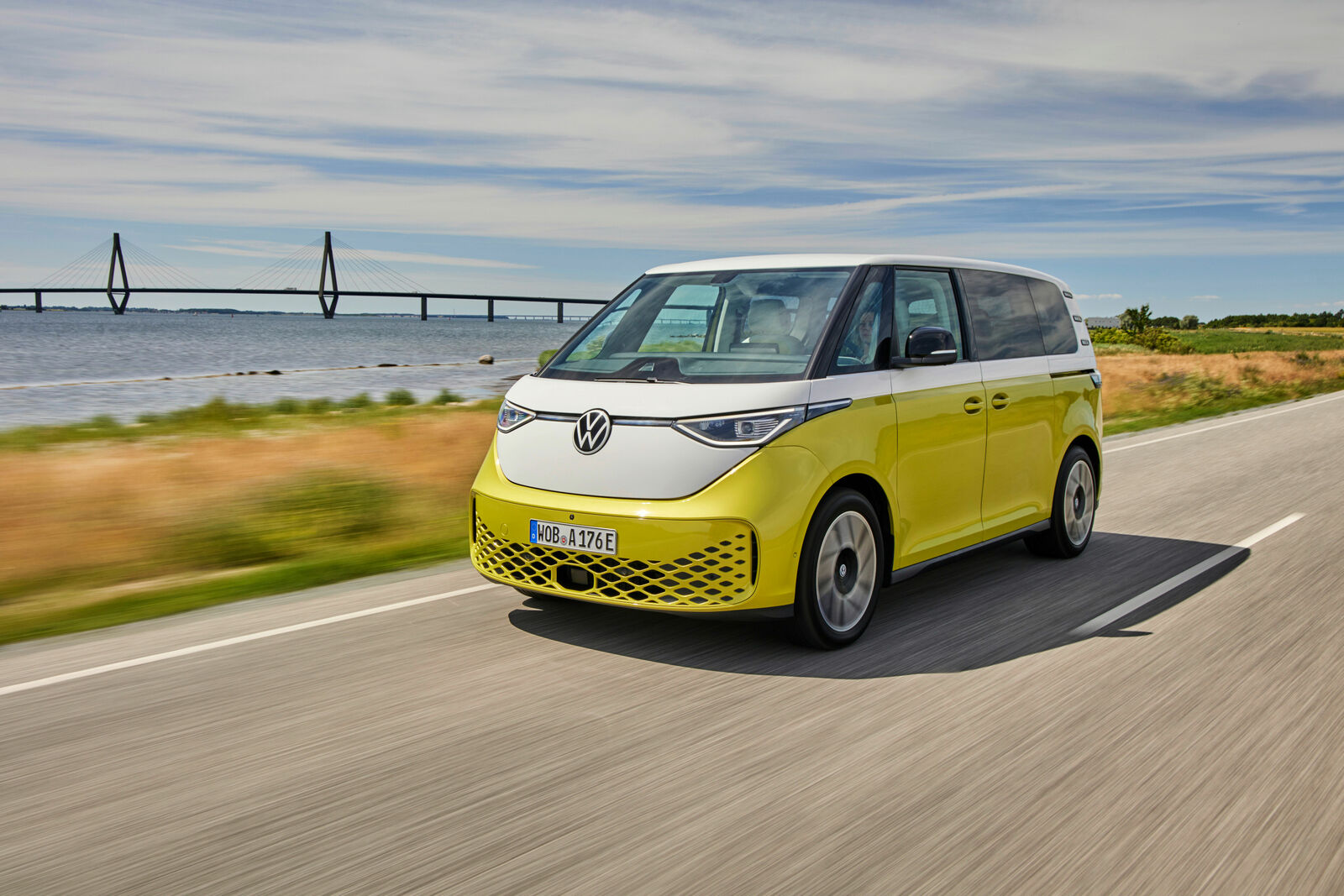Modular Electric Drive Matrix. In engineering terms the ID. Buzz and ID. Buzz Cargo are based on the Volkswagen Group’s Modular Electric Drive Matrix (MEB). The MEB system is made up in the ID. Buzz of the electric motor (permanent-magnet synchronous motor, PSM for short), a power electronics unit, an automatic single-speed gearbox, the twelve modules of the lithium-ion high-voltage battery arranged in space-saving manner in the vehicle floor and various additional components integrated within the vehicle’s front end. The battery has a net energy capacity of 77 kWh (82 kWh gross). The flow of high-voltage energy between the motor and the battery is managed by the power electronics unit, converting in the process the direct current (DC) stored in the battery into alternating current (AC). The on-board electronics are in parallel supplied with 12V via a so-called DC/DC converter.
150 kW output and up to 425 km WLTP range. The electric motor of the ID. Buzz is integrated into the driven rear axle and develops a power output of 150 kW (204 PS). One of the qualities of the almost silent motor is the fact that it makes its maximum torque of 310 Nm available from a standing start. And that ensures very good pull-away performance. Both ID. Buzz models reach 100 km/h in 10.2 seconds. The top speed is electronically limited to 145 km/h, above the usually applicable legal or advisory speed limit on motorways. Based on the current WLTP standard, the range of the five-seater ID. Buzz is up to 423 km. Also based on WLTP, the ID. Buzz Pro uses 21.7 to 20.5 kWh/100 km. The corresponding figures for the ID. Buzz Cargo: up to 424 km and 22.2 to 20.4 kWh/100 km. The ID. Buzz is classified in Germany in the top efficiency class: A+++.
Charging using 11 kW. The lithium-ion high-voltage battery is charged via a connection point on the rear nearside of the vehicle. If this is done connected to a wall box at home or at work, or when out and about connected to a public charging station with AC charging power of 11 kW, the battery is completely powered back up again (0 to 100 per cent) in 7 hours 30 minutes. Volkswagen offers its own 11-kW wall box range made up of the ID. Charger, ID. Charger Connect (extra features such as LAN/WiFi control via app) and ID. Charger Pro (like ID. Charger Connect, plus certified energy meter). With the new ID. Charger Travel – a kind of mobile wall box – it is possible to charge the ID. Buz using the maximum permitted power, depending on the relevant mains, when out and about too.
Charging using 170 kW. On the road, the ID. Buzz can be charged at DC fast-charging stations with charging power of up to 170 kW. In this case, the battery is charged up from 5 to 80 per cent in c. 30 minutes. For anyone wanting to go, for instance, from or Amsterdam to Paris (c. 520 km) one charging stop as a coffee break is therefore sufficient to arrive at the destination city with a good remaining range. Thanks to the new ‘Plug & Charge’ function, charging cards and apps for authentication at the station are becoming increasingly superfluous for this: in their place, the billing data is exchanged at compatible DC charging stations via the vehicle’s charging plug. It works in detail as follows: as soon as the charging cable is plugged in, encrypted, secure communication based on what is known as the ISO-15118 standard begins between the ID. Buzz and the charging station. This authentication takes only a few seconds. The charging process then begins – a charging card or app for payment is no longer required here. ‘Plug & Charge’ is in use on the networks of Ionity, Aral, bp, Enel, EON, Iberdrola and Eviny. Discussions are also already taking place with other major suppliers.
